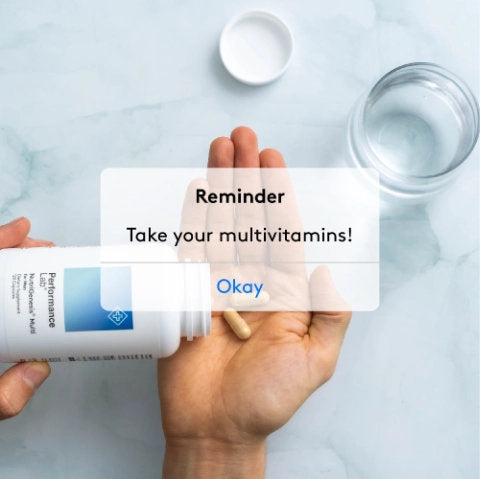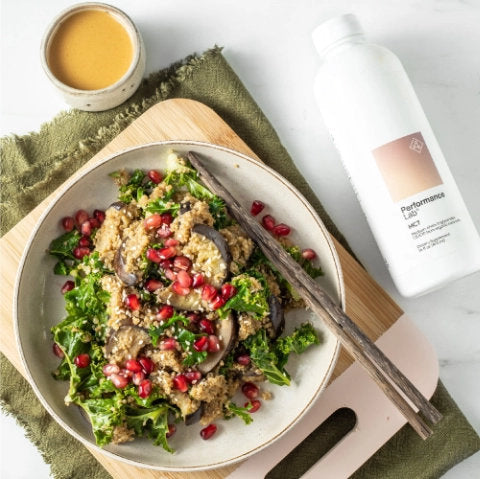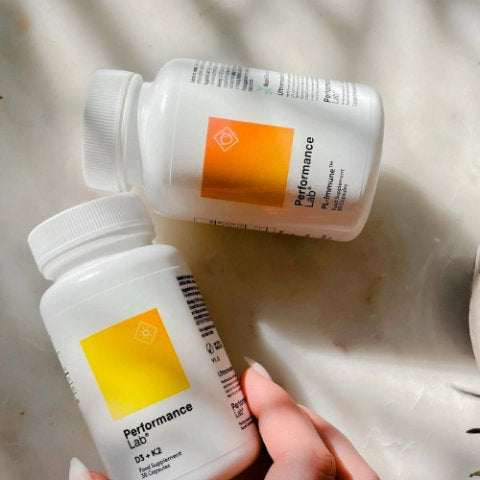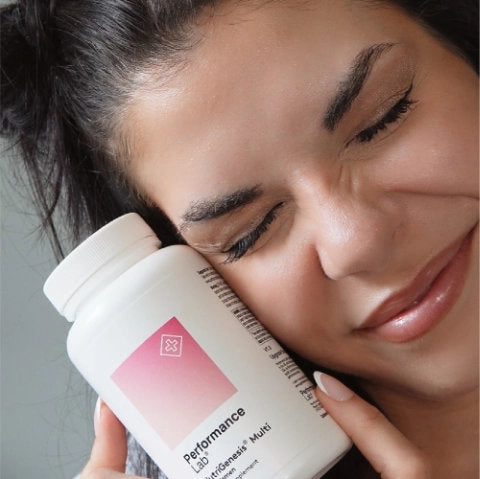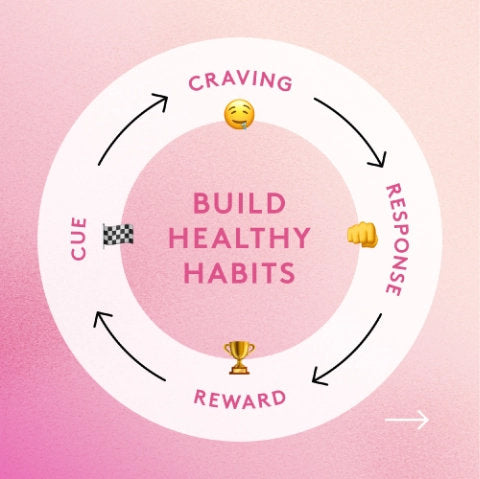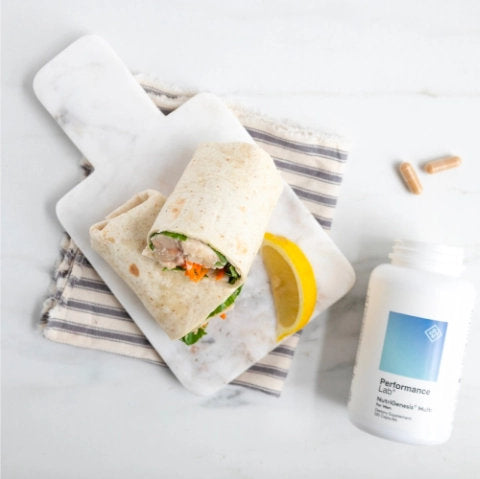Your complete guide to what, when and how much to eat for optimal muscle growth
To build muscle you need to lift weights. We know that.
But if you’re not fueling your body with the right nutrition, all those hours in the gym could be wasted.
The wrong diet will leave you tired, demotivated and with an underwhelming physique. But the right one will leave you jacked, pumped and reaching for the muscle-fit t-shirts.
In this article we dig into the latest science-backed data on nutrition protocols for optimal muscle growth. Revealing exactly what, when and how much you need to eat to build a powerful, strong and muscular physique.
To warm up, we’ll take a look at:
- Building positive habits to support your goals
- What makes muscles grow
You are a product of the nutrients that you put in your body.
Every day you fight a battle between the growth of new tissue and removal of the old, worn out stuff. And without the right foods to fuel this process, you just can’t support the extra mass on your frame.
Your diet underpins everything you do in the gym. Without a solid foundation of optimal nutrients, you’ll never realize your physical potential
When you hit the gym, you break down stored energy to power you through your workout. This takes a toll on the reservoir of nutrients stored in your muscles and liver. These reserves need to be topped up before workouts and replenished afterwards.
Plus, you need to make sure you have a surplus to support the metabolic processes that result in new muscle cells.
It’s a war, my friend. But we’re here to help…
Muscle hypertrophy is the term used in textbooks to explain the growth of muscle
The following sections in this guide are a walk-through of everything you need to know to get tore up from the floor up! To help build you a lean, muscular physique that’ll leave heads turning in awe.
If training is the trigger for muscle mass, nutrition is the fuel
The process of lifting weights is catabolic. Which means, strength training breaks down stored energy through a series of metabolic pathways in order to provide fuel for your workout.
Many people don’t realize that lifting weights in the gym is actually damaging to the structure of your body. It makes small tears in your muscle cells and creates a stressful environment for your connective tissue, nervous system and bone cells.
So, why does breaking down your body lead to greater muscle mass?
Well, the simple fact is: without the catabolic stimulus of lifting weights, you’ll never grow.
The specific stimulus from strength training triggers a number of hormonal, chemical and mechanical adaptations in your muscles that result in growth.
The more often you lift weights, the stronger your muscle fibers become. They grow back bigger and more robust in order to protect themselves from further damage.
Not only that, your tendons learn how to better transfer load. And your nervous system learns how to send more frequent, faster and more synchronized message to your muscle fibers (a process called ‘rate coding’). This allows them to generate more force. Making you stronger.
But it is nutrition that accelerates this adaptive process.
The importance of calories for muscle growth
Okay, now we’ve warmed up - let’s move on to:
- Energy balance and muscle growth
- How much of a calorie surplus for muscle gain?
Nutrition supports anabolic processes.
The energy you get from food is measured in calories - or more specifically kilocalories. That’s the amount of energy required to raise the temperature of a kilogram of water by one degree Celsius. (When we talk about ‘burning’ calories, it is simply because they’re a measure of heat production).
Food energy not only helps to fuel your body and reverse the catabolic processes of exercise, but it supports new growth too.
Energy balance and muscle growth
The amount of energy you get from food dictates the volume and rate of muscle growth.
A bit like a builder needs the right amount of materials to shape and construct a solid wall – nutrition provides the fuel you need to build strong, powerful muscles.
The term ‘energy balance’ is used to explain the relationship between the calories you take on from food and those you burn off as fuel for physical activity. Or supporting vital muscle-building processes.
This is the important part…
For optimal muscle hypertrophy, you need a small surplus of energy to support the development of new tissue.
NOTE: Some people can build muscle on a calorie deficit, but we’ll get on to that in a moment.
Calorie surplus: This is when you eat more calories than your body needs to maintain current mass. Leaving you with some ‘spare’ energy to support muscle hypertrophy.
Energy balance: This is when the number of calories you eat matches the amount you burn off.
Calorie deficit: This is a case of eating fewer calories than your body needs. Meaning you begin to lose mass as your body uses both fat and muscle to make up the difference.

How much of a calorie surplus is needed for muscle gain?
To return to our builder analogy, it makes sense to have spare materials at your disposal. There would be nothing worse than getting to the last row of bricks, only to find that you’d counted short or were running low on cement.
Likewise, having a bit of spare energy to call on is important. Allowing muscles to use it to repair and grow, without sacrificing other key metabolic functions.
Back in the day, bodybuilders used the dirty bulk approach to hypertrophy their frames. Eating anything and everything to flood their physiques with calories.
And while this works in terms of muscle building, it will also lead to gaining fat too. It’s inefficient and we have moved on since those dark days.
Calories dictate the amount and rate of muscle growth. For most people, a calorie surplus puts them in a prime position for muscle hypertrophy
The smart thinking now recommends an energy surplus of 10-20% to balance the extra fuel for muscle without unnecessary loss of physique or performance. That’s around 300-600 kcal for most people.
It’s also worth noting that everyone’s genetic make-up different. Some respond better and faster to higher surpluses, while others will grow rapidly with just a small surplus.
You know your body best, so a little trial and error might be necessary before you achieve the optimum results.
This ‘lean gain’ approach is much more efficient that the all-guns-blazing dirty bulk. It also means you’ll got less work to strip down come summer shredding season too.
Prioritizing protein for maximal mass
Right, let’s move on to the type of nutrition you need:
- Protein and strength training
- How much protein to optimize muscle hypertrophy
“When it comes to supporting muscle hypertrophy, it’s protein that takes center stage”
Once you’ve calculated your calorie needs for optimal muscle gain, it’s time to fill in the gaps with macronutrition. There are three:
- Protein
- Carbohydrates
- Fats
Every gram of protein provides 4 kcal.
Proteins are made up of peptide chains which string together, a bit like a beaded necklace. The beads on the necklace are individual building blocks called amino acids (AAs).
There are 20 proteinogenic amino acids in total (although some textbooks will say 21 or 22, depending on which one you reference). But they all agree they can be split into the following categories:
- There are nine Essential amino acids which must be obtained from food, as your body can’t manufacture them. Examples include tryptophan, phenylalanine and the branched-chain amino acids (BCAAs) leucine, valine and isoleucine.
- There are 11 Non-essential amino acids. Your body can produce these if needed but prefers to get them from food. Examples include alanine and aspartic acid.
- Some amino acids are This means they remain non-essential except in times of illness or stress when your body requires them from the diet to fight it off. Arginine, glutamine and tyrosine are examples.
Foods that contain all nine essential amino acids are referred to as complete proteins. Focusing on these is important to support your muscle-building goals and will helps to optimize muscle protein synthesis (MPS) – i.e. make gains.
Foods that are high in complete protein include:
- Chicken, beef and pork
- Fish
- Eggs
- Whey, cheese, milk, yogurt and other dairy products
- Soy
- Quinoa
- Mycoprotein
Protein and strength training
When you lift weights, you experience a short-term increase in muscle protein synthesis (MPS). This is the process that triggers the cellular changes that result in mass gain.
When MPS rates are elevated, your body is in a perfect anabolic state to build muscle.
Achieving ‘net’ MPS is important determinant of hypertrophy1. Protein works synergistically with this increase in MPS.
And when combined, the result is a significant increase in hypertrophy. Put simply, lifting weights and eating protein gets you jacked!
Protein supports several physiological processes. From peptide hormone production to immune cell function, protein is key for overall health.
When it comes to body composition and performance, higher protein intakes have been found to result in lower body fat2 and greater increases in lean mass during phases of resistance training3.
Higher protein intakes have also been shown to increase:
- Maximal strength
- Endurance performance
- Power development
For anyone wanting to develop a great physique, protein is the holy grail of nutrients.
How much protein to optimize muscle hypertrophy?
During the late 1980s and throughout the 1990s researchers found that athletes and bodybuilders required more protein than sedentary adults – as much as 150% more.
Those taking part in strength training need more protein to support MPS and higher rates of lean mass.
According to the International Society of Sports Nutrition4, aiming for a protein intake of 1.4-2.0 grams per kilogram of body mass works well for muscle hypertrophy.
Some studies have found that protein intakes as high as 4.4g/kg5 also result in hypertrophy without additional fat gain.
Much like calorie intake, this will fluctuate from person to person. There’s a certain amount of individualization you need to consider when setting your protein intake - via diet or supplementation. Some can build mass on lower intakes of protein without issue, whereas others need to hit higher amounts to grow.

Frequently Asked Questions (FAQs):
How much muscle can you build and how fast does it grow?
This is the $64,000 question.
It’s important to be realistic in your goals. If you set out thinking you’ll be competing at the Olympia next year despite having never lifted a weight before, then you’re a dumbbell. But you’ll be pleasantly surprised at how much mass you can build as a beginner. Even if you’re an inexperienced gym-goer.
Experts suggest that as a beginner you can expect to see 1-1.5% of total body weight per month from muscle mass gains. In intermediate lifters this is more like 0.5-1% and in advanced lifters you’ll experience more like 0.25-0.5%.
It’s harder to grow muscle if you’ve been lifting for a long time as you’ve already moved far from your genetic starting point.
There are several factors that can affect muscle growth:
- Genetics: Some guys are just more susceptible to muscle growth based on their anthropometrics and muscle fiber type. Everyone can build muscle, but some can build more than others.
- Age: From the onset of puberty, high testosterone levels support muscle gain. After the age of around 40, natural anabolic hormone concentrations start to decrease which it tougher to add muscle mass.
- Steroids: Using anabolic androgenic steroids (AAS) ramps up your potential for growth far above your genetic capabilities. But is not recommended. Ever.
- Training level: Novice lifters add muscle at a faster rate because their muscles have far more adaptive potential. Experienced lifters still add muscle, but at a much lower rate.
- Growth/regrowth: Even after a long break from training, muscle growth rates can be relatively fast. This is down to the ‘muscle memory effect’ where satellite cells lay dormant even during periods of non-training and are re-activated upon return.
Can you build muscle in a calorie deficit?
Body recomposition refers to simultaneous fat loss and muscle gain. This can occur in newbie lifters or those that are overweight
Achieving a calorie surplus works best for hypertrophy. But for many people it’s not the only way. Some can shred body fat while adding lean mass6 at the same time.
Unfortunately, it won’t work for everyone. Being able to ‘body recomp’ is most likely among the following groups:
- Overweight or those will excess body fat
- Those new to weightlifting
- Those returning to training after a long break
Regular weight training and a high protein diet, alongside a small calorie deficit of 10-20% will maximize body recomposition results. Limiting the potential loss of muscle mass due to low energy intake.
Does it matter when you eat protein for muscle gain?
Yes and no.
Because strength training and protein ingestion work synergistically to elevate MPS, it’s logical to think there’s an optimal time of anabolic sensitivity to eat protein.
And to an extent, this is true. In a fed state, MPS rates are higher in the one to four hours immediately after ingesting protein than they are in a fasted state.
But in reality, eating protein straight after training isn’t necessary. Your workout won’t be wasted if you don’t chug a protein shake within 20 minutes of leaving the gym.
Studies have shown that the so-called ‘anabolic window’ doesn't really exist7. It’s more important that you achieve regular and sustained protein ingestion. With your daily recommended amount distributed evenly through the day and containing all essential amino acids.
Total protein intake is the key for muscle hypertrophy as it has the most significant impact on net MPS. Aim for 20-30 grams every two to four hours for optimal results.
Takeaway…
Don’t mistake effort for performance.
If you want to build strong, healthy muscle – pounding weights in the gym is only half the story. Unless you’re fueling your body with the right nutrients, you’ll never reach your goals.
A high-protein diet and small calorie surplus (of 10 – 20%) will give you the best chance of sculpting the physique you are looking for.
In short...
Eat protein. Lift weights. Get jacked.
If you haven’t already checked out our Complete Guide to Training for Muscle Mass, check it out here… Complete Guide to Training for Muscle Mass.
References
- https://link.springer.com/article/10.1007/s00421-010-1768-0
- https://www.ncbi.nlm.nih.gov/pubmed/29702029
- https://www.ncbi.nlm.nih.gov/pubmed/29405780
- https://jissn.biomedcentral.com/articles/10.1186/s12970-017-0177-8
- https://jissn.biomedcentral.com/articles/10.1186/1550-2783-11-19
- https://www.ncbi.nlm.nih.gov/pubmed/10838463
- https://jissn.biomedcentral.com/articles/10.1186/1550-2783-9-42


